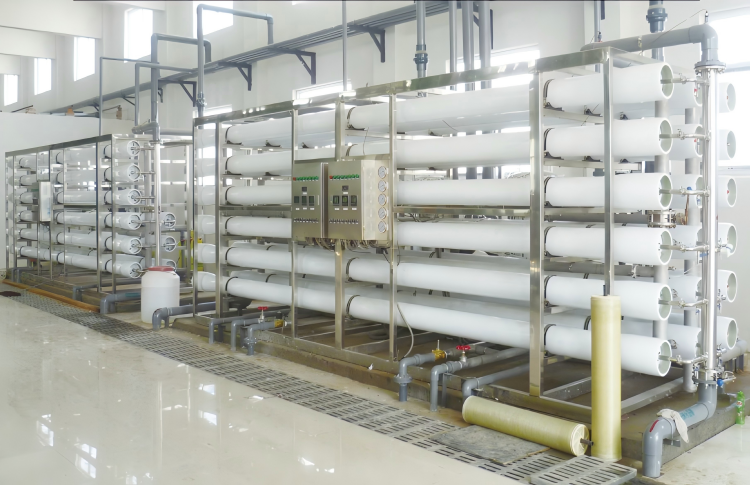Mining operations in South America often face unique challenges when it comes to water quality and availability. The region is home to some of the world’s largest mineral reserves, but the extraction processes demand significant water usage, leading to an urgent need for effective water management solutions. One technology that has proven effective in addressing these challenges is reverse osmosis (RO) systems. These systems are not only capable of desalinating brine water but also improving the overall water quality used in mining operations. In this blog, we will explore the applications of reverse osmosis systems in South American mining, their benefits, and the trends shaping the future of water treatment in the industry.
1. Applications of Reverse Osmosis Systems in South American Mining
Reverse osmosis is primarily used in mining operations for water purification and desalination. In South America, many mines are located in arid or semi-arid regions where freshwater sources are scarce. Therefore, seawater desalination or the use of brackish groundwater becomes essential for operations. The following are some common applications of reverse osmosis systems in the mining sector:
1.1 Desalination for Remote Mining Locations
Many mining operations, especially in coastal regions, rely on seawater desalination. Reverse osmosis desalination systems enable these operations to convert seawater into potable or process water, making it feasible to operate in areas without access to fresh water.
1.2 Brackish Water Treatment
In addition to seawater, mining companies in regions with brackish groundwater (water with a higher salinity than freshwater but lower than seawater) also use reverse osmosis. This technology allows them to filter and purify water for drinking, processing minerals, and dust suppression.
1.3 Water Recycling and Reuse
Another significant application is in water recycling and reuse. Mining operations often generate large quantities of wastewater, which can be treated and reused for various purposes, including process water, dust control, and cooling. Reverse osmosis systems are ideal for this purpose, as they can effectively remove contaminants from wastewater, thus reducing the overall water consumption.
2. Methods of Reverse Osmosis Implementation
Reverse osmosis systems in mining are implemented through various methods, each tailored to the specific water quality needs of the operation. The key components include pre-treatment, the RO membrane unit, and post-treatment.
| Method | Description | Benefits |
|---|---|---|
| Seawater Desalination | Seawater is pre-treated to remove large particles before being filtered through RO membranes. | Provides clean water for remote mines. |
| Brackish Water Treatment | Pre-treatment processes target suspended solids, then RO membranes filter out salts and minerals. | Efficient for areas with brackish groundwater. |
| Water Reuse and Recycling | Treating and reusing wastewater for non-potable and potable applications. | Reduces water consumption and lowers operational costs. |
Each method ensures that the water meets the quality standards required for mining activities while minimizing the environmental impact.
3. Benefits of Reverse Osmosis in Mining
The use of reverse osmosis in mining operations brings about several benefits. Some of the most notable advantages include:
3.1 Cost-Effectiveness
Although reverse osmosis systems may have a high initial installation cost, they prove to be cost-effective in the long run due to low maintenance needs and the reduction in water procurement costs. Efficient water use directly translates into reduced operational costs, especially for mines in remote areas.
3.2 Water Sustainability
Reverse osmosis helps conserve local water resources by allowing mining operations to use seawater or brackish water for their activities. Additionally, through water recycling, the pressure on local freshwater resources is significantly reduced.
3.3 Environmental Impact Reduction
With increasing pressure on companies to minimize their environmental footprint, reverse osmosis systems are essential for complying with environmental regulations. These systems remove contaminants such as heavy metals and suspended solids from wastewater, ensuring that the discharge meets regulatory standards.
3.4 Improved Operational Efficiency
By providing a consistent and high-quality water supply, reverse osmosis systems improve the overall efficiency of mining processes. For instance, better water quality contributes to higher recovery rates in mineral extraction and reduces equipment wear and tear caused by poor-quality water.
4. Future Trends in Reverse Osmosis for Mining
The mining industry in South America is evolving, and so is the role of reverse osmosis. Several trends are shaping the future of water treatment in the sector, including:
4.1 Technological Advancements in RO Membranes
Ongoing research and development are leading to advancements in RO membrane technology. New membrane materials, such as composite membranes and high-flux membranes, are being developed to enhance performance, reduce energy consumption, and extend membrane lifespan.
| Trend | Description | Impact |
|---|---|---|
| Energy-Efficient Membranes | Membranes designed to reduce energy consumption and improve desalination efficiency. | Lowers operating costs. |
| Smart RO Systems | Integration of IoT sensors and AI technologies to monitor and optimize system performance. | Enhances operational efficiency. |
4.2 Increased Focus on Water Recycling
With the growing importance of sustainable practices, the demand for water recycling technologies is expected to increase. Mining companies are now looking for ways to treat and reuse even more wastewater, which will increase the reliance on reverse osmosis systems.
4.3 Regulatory Pressure and Environmental Standards
As governments in South America implement stricter environmental regulations, mining companies are under increasing pressure to adopt sustainable water practices. Reverse osmosis systems will continue to play a critical role in helping these companies comply with water quality standards and reduce their environmental footprint.
Conclusion
Reverse osmosis systems are already a critical component in water treatment for mining operations in South America. They offer cost-effective, sustainable, and environmentally friendly solutions to meet the water demands of the mining industry. As technology continues to evolve, we can expect reverse osmosis systems to become even more efficient and integrated into mining operations, helping companies navigate the challenges of water scarcity and environmental responsibility.
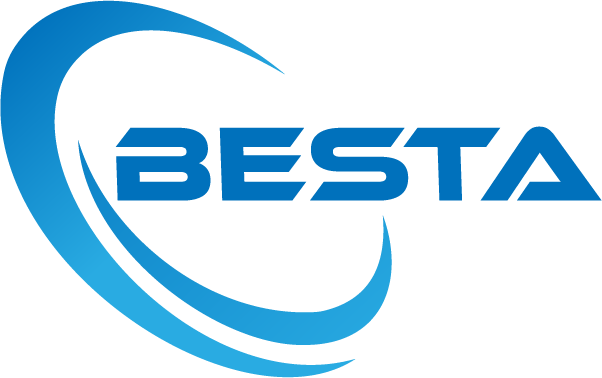
 MBR Membrane
MBR Membrane Reverse Osmosis Membrane
Reverse Osmosis Membrane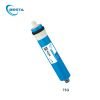 Residential Ro Membrane
Residential Ro Membrane UF Membrane
UF Membrane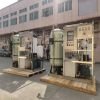 Water Treatment Plant
Water Treatment Plant Residential Ro Machine
Residential Ro Machine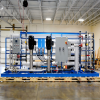 Brackish Ro System
Brackish Ro System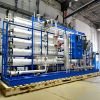 Sea water system/SW RO plant
Sea water system/SW RO plant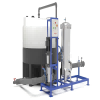 Membrane Cleaning System(CIP)
Membrane Cleaning System(CIP) Consumables Accessories
Consumables Accessories